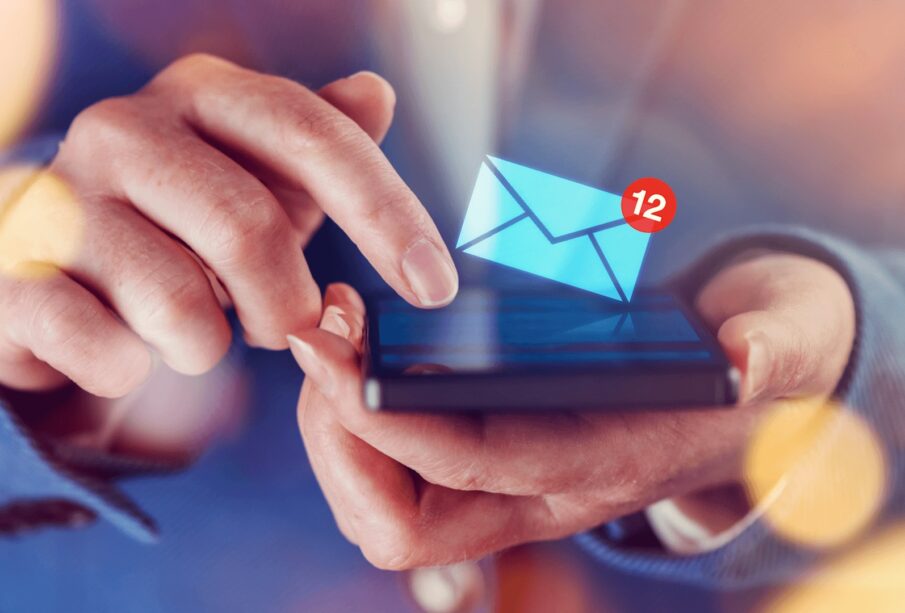Optimizing your B2B follow-up email for mobile devices

In today’s mobile-centric world, it is essential to optimize your B2B follow-up email for mobile devices. Many professionals access their emails primarily on smartphones or tablets, so if your email is not mobile-friendly, you risk losing potential conversions https://reply.io/email-template-categories/follow-up/.
To optimize your B2B follow-up email for mobile devices, keep the following best practices in mind:
- Use a responsive email design: Ensure that your email template automatically adjusts to different screen sizes and orientations. This will ensure that your email is easily readable and visually appealing on both desktop and mobile devices.
- Keep the content concise: Mobile users have limited screen space and shorter attention spans. Keep your email content concise and to the point. Use bullet points, short paragraphs, and subheadings to improve readability.
- Use a single-column layout: A single-column layout is easier to read and navigate on mobile devices. Avoid using multiple columns or complex designs that may cause formatting issues or make the email difficult to read.
- Use a legible font size: Choose a font size that is large enough to be easily read on a mobile screen. Aim for a minimum font size of 14 pixels to ensure readability.
- Test your email on different devices and email clients: Before sending out your B2B follow-up email, test it on various mobile devices and email clients to ensure that it displays correctly and functions as intended.
By optimizing your B2B follow-up email for mobile devices, you ensure that your message reaches and engages a wider audience, increasing the chances of conversion.
Using Reply.io to automate and track your follow-up emails
Reply.io is a powerful tool that can help you automate and track your B2B follow-up emails, saving you time and improving your conversion rates.
It can be interesting for you – https://reply.io/e-books/follow-up-guide/.
With Reply.io, you can create email sequences that automatically send follow-up emails to your prospects at predetermined intervals. This ensures that your follow-up process is consistent and timely, increasing the chances of a response.
The tool also provides detailed analytics and tracking features, allowing you to monitor the performance of your follow-up emails. You can see open rates, click-through rates, and reply rates, which can help you identify areas for improvement and optimize your email sequences for better results.
In addition to automation and tracking, Reply.io offers personalization features, allowing you to dynamically insert personalized information into your follow-up emails. This helps you tailor your messages to individual recipients, increasing their relevance and engagement.
By using Reply.io to automate and track your follow-up emails, you can streamline your follow-up process, improve your conversion rates, and make data-driven decisions to optimize your email sequences.
Analyzing the performance of your B2B follow-up email
Analyzing the performance of your B2B follow-up email is crucial to improving your conversion rates and optimizing your email sequences. By tracking key metrics and analyzing the data, you can identify what is working and what needs improvement.
Start by monitoring the open rate of your follow-up emails. This metric indicates how many recipients are opening your emails and shows the effectiveness of your subject lines and sender names. If your open rate is low, consider testing different subject lines or sender names to improve engagement.
Next, track the click-through rate (CTR) of your follow-up emails. This metric tells you how many recipients are clicking on the links or CTAs in your emails. A low CTR may indicate that your content or CTAs are not compelling enough. Experiment with different CTAs or content to increase engagement and encourage more clicks.
Another important metric to track is the reply rate. This shows how many recipients are responding to your follow-up emails. A low reply rate may indicate that your messages are not resonating with your audience or that your CTAs are not clear. Analyze the content and tone of your emails to identify areas for improvement.
Additionally, pay attention to conversion rates. This metric measures how many recipients are taking the desired action after receiving your follow-up emails. If your conversion rates are low, reassess your value proposition, CTAs, and overall messaging to ensure they are aligned with your target audience’s needs and preferences.
By regularly analyzing the performance of your B2B follow-up email, you can make data-driven decisions to optimize your email sequences, improve your conversion rates, and ultimately achieve better results.
Best practices for B2B follow-up email etiquette
When sending B2B follow-up emails, it’s important to follow certain best practices to ensure professionalism and increase the chances of a positive response. Here are some key etiquette tips to keep in mind:
- Personalize your emails: Take the time to research and understand the recipient’s business and needs. Address them by their name and mention specific details to show that you have tailored the email to their situation.
- Be concise and clear: Keep your emails brief and to the point. Avoid using jargon or complex language that may confuse the recipient. Use bullet points or subheadings to break up the text and improve readability.
- Use a professional tone: Maintain a professional and respectful tone in your follow-up emails. Avoid using overly casual language or slang. Show empathy and understanding for the recipient’s challenges.
- Follow up strategically: Determine an appropriate follow-up cadence based on the recipient’s previous interactions or industry norms. Space out your follow-up emails to avoid overwhelming the recipient, but also ensure that you remain on their radar.
- Respect opt-outs and unsubscribe requests: If a recipient requests to be removed from your email list or indicates they are not interested, respect their decision. Continuing to send follow-up emails after opt-outs can harm your reputation and credibility.
- Proofread and test your emails: Before sending out your follow-up emails, proofread them carefully for any typos or errors. Test the email on different devices and email clients to ensure that it displays correctly and functions as intended.
By following these best practices for B2B follow-up email etiquette, you can maintain professionalism, build trust with your recipients, and increase the chances of a positive response.
In conclusion, crafting the perfect B2B follow-up email template requires attention to detail and a strategic approach. From writing a compelling opening sentence to optimizing your email for mobile devices and using automation tools like Reply.io, each step plays an important role in increasing your conversion rates. By analyzing the performance of your emails and following best practices for B2B follow-up email etiquette, you can continuously improve your email sequences and achieve better results. So, start implementing these strategies today and watch your B2B follow-up emails become powerful conversion tools.
Ready to boost your B2B conversion rates? Start implementing the tips and techniques mentioned in this article and see the difference it can make. Remember, a well-crafted follow-up email can be the key to turning prospects into loyal clients.
It can be interesting for you – https://reply.io/jason-ai/.













